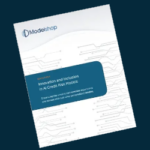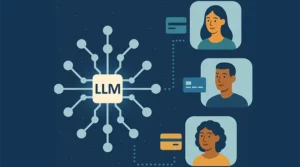Lenders know that they must digitize origination if they want to remain competitive. Completing an online application through funding in a single sitting is already available for most types of loans. Upper spectrum lending with minimum collateral has been automated for decades. Lenders are now rapidly automating origination for a broader spectrum of risk, more sophisticated loan structures and complex collateral loans including mortgages. Lending has become a data and technology arms race which the pandemic’s stay-at-home culture has helped accelerate.
While digital transformation has caused significant consolidation in marketing, social networking and retail, it seems that traditional lenders have been less adversely impacted so far. Customers seem to value established trust relationships in financial transactions more than a frictionless lending experience. That luxury will likely fade as the primary target for lending shifts to younger generations and non-traditional lenders offer credit services through their existing platforms (such as Amazon and Costco). Established lenders have a short window to transform their origination experience before they are left behind.
Many lenders are choosing to build a custom digital origination experience
A question facing lenders as they approach digital transformation is whether they should build a unique customer experience or leverage an off-the-shelf digital lending platform. The former has the potential to strengthen their digital brand and create competitive differentiation while the latter promises lower costs and a faster time to market.
An important trend in lending origination is to embed an interactive financing option directly in an existing consumer experience. Digital first brands such as Carvana allow you to explore cars for sale online while being presented with pre-approved financing instantly for each car. Credit at the point of sale from lenders like CreditKey is becoming more common. I have been working with multiple mortgage lenders who are able to connect pre-approved financing with home listing. Each of these examples require a flexible technical platform with custom integration with point-of-sale platforms at multiple points.
I am encountering more lenders who believe that building a custom platform makes sense. Whether they are making this decision based on a prior negative experience with off-the-shelf software or based on their optimism about creating a differentiated experience, more lenders seem to be striking out on their own path towards digital lending.
Creating credit origination models in custom code can introduce material risk
This build vs. buy tradeoff is not new, and most lenders realize that building a solution completely from scratch can be fraught with risk. Lenders are not experts at building software and investing in development skills internally can be very expensive for what will be a limited timeframe investment.
Instead, I am seeing lenders work with outsourced development teams experienced in building consumer facing applications. The challenge is that the skills and technology needed to build a consumer lending experience are not the same that are needed to automate credit risk, collateral, and pricing decisions. Executed poorly, these next generation origination platforms will result in the same opaque, fragile, and poorly managed decision logic that plagued custom origination solutions created in the 80’s the 90’s. The only difference is that lenders are writing these new platforms in Python and Ruby instead of COBOL.
No-code models provide a hybrid alternative
There is another choice. A new generation of no-code platforms provide an alternative for lenders looking to create a customized consumer experience powered by robust decision automation models ‘under the hood’. No-code is a great choice for rapidly creating decision models that can be maintained by the business instead of by developers. This is especially important when development teams are hired to create a new lending solution but are not likely to be part of the business long-term.
Putting critical credit logic in a no-code tool facilitates a clean change history for policies as well as a convenient tool for reviewing credit models during audits. By separating critical data, calculations and rules from other custom code, risk and marketing teams can more easily analyze the historic results needed to build projections and predictive analytics that can drive improved portfolio performance.
Lending automation involves much more than credit and pricing decisions
There are multiple points in lending origination where no-code models can help drive smarter and more transparent decisions. Credit risk and pricing decisions clearly benefit from automation, but the entire lending lifecycle including marketing, identity verification, income verification, collateral analysis, fraud prevention, loan structuring, fee calculations and truth in lending disclosures can be automated using models that put the logic and results in the hands of the business.
Each of these decision areas involve data from vendors that inform decisions, such as the credit bureaus, banking transactions from vendors like Plaid, fraud scores and collateral reports. Effectively using these data sources can be complex and requires teams to create sophisticated calculations that extract insights critical to making an automated origination decision. Most no-code platforms include flexible data connectors as well as plug-ins for common data providers which make the process for retrieving and interpreting alternative data sources easier. Combined with the flexibility to create custom calculations, rules and predictive analytics using that data give lenders the tools they need to deliver a highly custom and frictionless origination experience.
Continuous learning and point-of-sale choices will provide better outcomes
The bigger opportunity emerging from digital lending is the agility that allows lenders to rapidly evolve their lending policies. Connecting the no-code models that power origination to performance simulation and machine learning tools enables risk and marketing teams to rapidly learn from historic results and deploy improved decision models without a lengthy coding cycle. Continuous learning where teams are testing and promoting new credit risk, pricing and marketing models with a click will become the new normal for lenders.
The solutions emerging from this digital transformation will provide more than a frictionless experience for borrowers, they will open entire new channels of credit for consumers. As lenders move towards instant decisions powered by intelligent and adaptive models, credit will become more integrated into everyday transactions and it will become available to a wider spectrum of borrowers at more competitive rates. Point of sale channels such as retail, online auto dealers or even home listing sites will seamlessly integrate financing options into their buying process. Informed consumers will be able to understand their purchasing power and make more responsible financing decisions.
The digitization of lending is happening very quickly, and lenders who evolve have an opportunity to build larger portfolios of more profitable customers. Those who are unable to evolve will find it hard to participate in the next generation digital economy.






